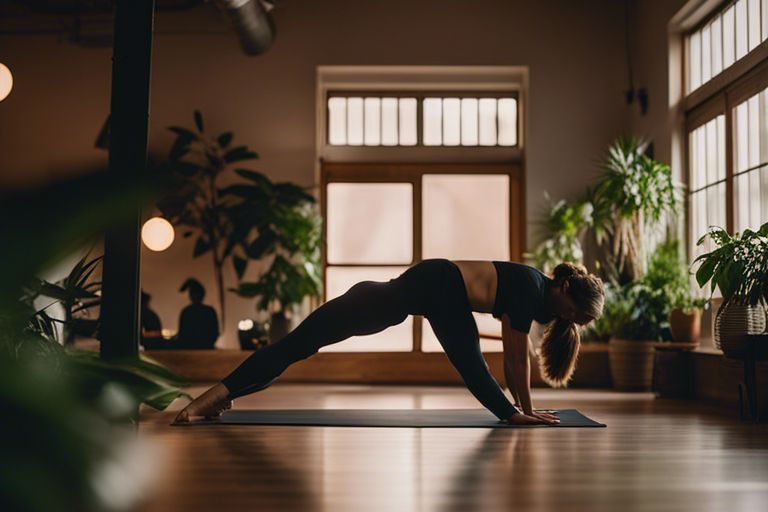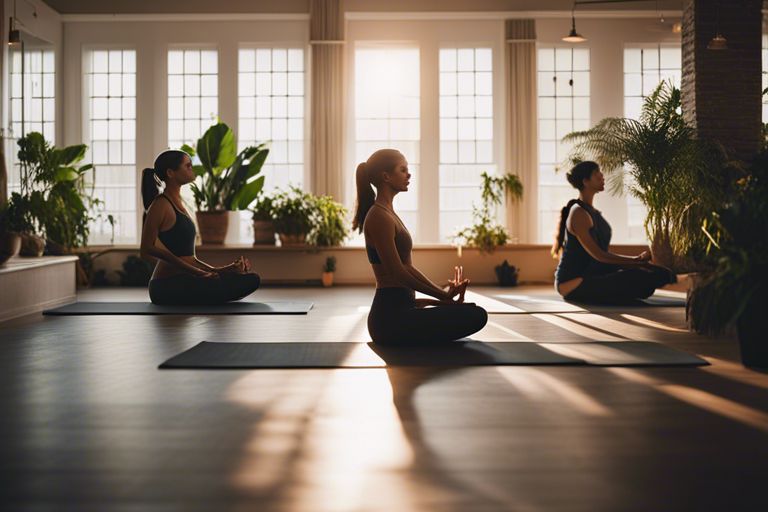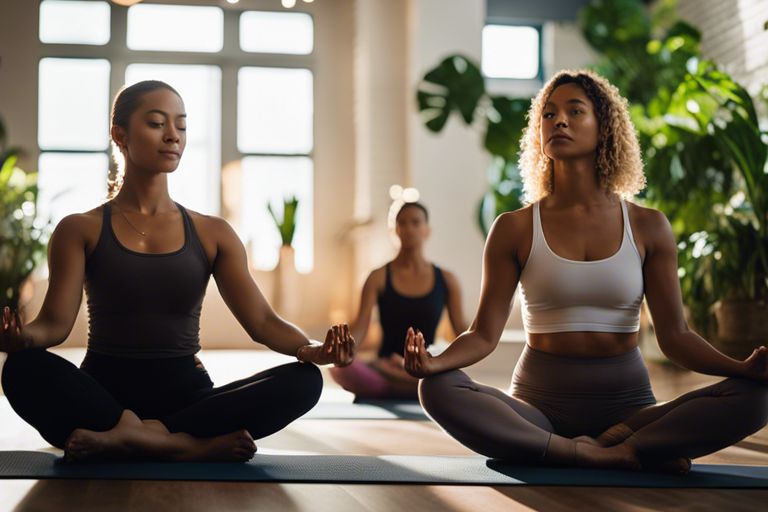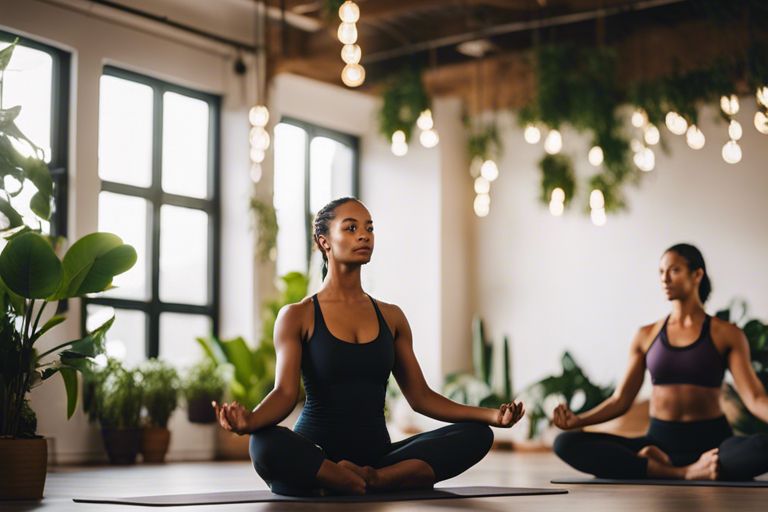Many times, life can feel chaotic and overwhelming, leaving you feeling scattered and disconnected. In those moments, slow flow yoga can be a powerful tool to help you cultivate presence and bring you back to the present moment. By moving mindfully and consciously through each pose, you can strengthen your mind-body connection and find a sense of calm and clarity. In this blog post, we will explore how you can use slow flow yoga to ground yourself and cultivate a deeper sense of presence in your daily life.

Key Takeaways:
- Mindful Awareness: Slow flow yoga helps cultivate mindful awareness by encouraging practitioners to focus on their breath, movements, and sensations in the body.
- Connection to the Present Moment: Through slow, deliberate movements, individuals can deepen their connection to the present moment and develop a sense of inner peace and calm.
- Physical and Mental Well-being: Practicing slow flow yoga regularly can contribute to both physical and mental well-being, promoting relaxation, stress reduction, and overall vitality.

Understanding the Power of Slow Flow Yoga
A slow flow yoga practice can provide you with a deeper connection to your body and breath. The gentle pace allows you to truly feel each movement and be present in the moment. By moving slowly, you can pay more attention to alignment and subtle adjustments, which can help prevent injuries and improve your overall practice. Slow flow yoga encourages you to stay focused on your breath, enhancing your ability to cultivate mindfulness and presence on and off the mat.
How Slow Flow Yoga Differs from Other Yoga Styles
With slow flow yoga, you move through poses at a more leisurely pace compared to styles like vinyasa or power yoga. This allows you to savor each posture and transition, promoting a sense of calm and groundedness in your practice. Unlike fast-paced styles, slow flow yoga gives you the opportunity to explore poses more thoroughly, understanding the subtleties of each movement and how it feels in your body.
The Science Behind Slow Flow Yoga and Presence
Even though slow flow yoga may seem less intense than other styles, it can have a powerful impact on your mind and body. The deliberate and mindful movements in slow flow yoga help activate your parasympathetic nervous system, promoting relaxation and reducing stress levels. This can lead to improved focus, mental clarity, and a greater sense of presence in your daily life.
From increasing your body awareness and sensitivity to developing a deeper mind-body connection, slow flow yoga offers a holistic approach to wellness that goes beyond just physical exercise. Through the combination of slow, intentional movements and conscious breathing, you can tap into a state of calm and presence that carries over into all aspects of your life.
1. Begin by grounding yourself in a comfortable seated position.
2. Connect with your breath, inhaling and exhaling deeply.
3. Slowly transition into gentle poses, focusing on alignment and breath.
4. Move mindfully with awareness and intention through each movement.
5. Stay present in the moment, letting go of distractions.
6. Complete your practice with a moment of stillness and gratitude.

Preparing for a Presence-Cultivating Practice
One important aspect of cultivating presence through a slow flow yoga practice is creating a conducive environment that allows you to dive deep into your practice.
Tips for Creating a Conducive Environment
Little details can make a big difference in setting up a space that supports your presence cultivation. Start by finding a quiet and clutter-free area where you won’t be disturbed. Consider lighting a aromatherapy candle or some incense to create a calming atmosphere. Adjust the temperature to a comfortable level, and have all the necessary props like blocks, straps, and a mat within reach. Play some soothing music if that helps you relax.
- Aromatherapy candle or incense
- Comfortable temperature
- Soothing music
Note, the environment you practice in can greatly affect your ability to be present throughout your session. You want to create a space that allows you to fully focus on your breath and movement without distractions. Ensure that the space feels inviting and calming to enhance your overall experience. Thou, creating the right environment is crucial for a successful presence-cultivating practice.
Factors to Consider Before You Begin
One of the critical steps in preparing for a presence-cultivating yoga practice is to consider various factors that can impact your session.
- Physical limitations
- Mental state
- Time of day
You must assess your physical limitations and choose a practice that suits your body’s needs. Check-in with your mental state and ensure you are in the right headspace for a focused practice. Additionally, consider the time of day and how it may affect your energy levels and concentration. The factors you consider before starting your practice can significantly impact the quality of your experience. The key is to tune into your body and mind to tailor your practice to meet your specific needs.
Another critical factor to consider is setting intentions for your practice. By establishing a clear purpose or goal for your session, you can guide your focus and energy towards cultivating presence on the mat. The intentions you set can help you stay grounded and present throughout your practice, fostering a deeper connection to your body and breath. The act of setting intentions can be a powerful tool in enhancing your overall yoga experience and promoting mindfulness. The intentions you set can serve as a reminder of why you are showing up on the mat and help anchor you in the present moment. The more aligned you are with your intentions, the more rewarding and meaningful your practice will become. The process of setting intentions is a personal one, so take the time to reflect on what you hope to cultivate during your time on the mat.
Cultivating Presence Through Slow Flow Yoga
All slow flow yoga practice is about cultivating presence and mindfulness through the integration of breath and movement. It allows you to connect deeply with your body and nurture a sense of awareness that carries over into your daily life.
How to Focus on Your Breath and Body
To enhance your presence during slow flow yoga, focus on your breath as you move through each pose. Notice the sensation of the air as you inhale and exhale, and how it energizes and relaxes your body. Pay attention to the physical feel of each movement and transition between poses, allowing yourself to be fully present in the moment.
Tips for Mindful Movement and Transition
- Move slowly and with intention to deepen your connection with your body.
- Focus on the transitions between poses to maintain a sense of flow and presence.
Your mindful movements in slow flow yoga help you stay grounded and centered throughout your practice. The intentional focus on each movement builds a stronger mind-body connection.
The Importance of Self-Awareness in Slow Flow Yoga
Even in the gentle practice of slow flow yoga, self-awareness plays a crucial role in nurturing your practice and connecting with your body. It involves paying attention to your thoughts, emotions, and physical sensations without judgment.
Understanding yourself on a deeper level allows you to honor your body and its needs during each flow, creating a more nurturing and empowering practice for yourself.
Overcoming Common Obstacles and Challenges
Factors That May Distract You from Your Practice
Your slow flow yoga practice can be greatly affected by various distractions that may come your way. It’s important to be aware of these factors so you can effectively address them and stay focused on your practice.
- External distractions: such as noise, other people, or electronic devices can disrupt your concentration.
- Internal distractions: like wandering thoughts, feelings of discomfort, or emotions can also pull you away from your practice.
- Physical obstacles: such as fatigue, injury, or lack of flexibility may hinder your ability to fully engage in the practice.
Though these distractions may arise, it’s crucial to acknowledge them and find ways to overcome them in order to maintain a consistent and focused slow flow yoga practice.
How to Stay Motivated and Committed to Your Practice
There’s no denying that motivation and commitment are important when it comes to nurturing a regular slow flow yoga practice. It’s natural to encounter ups and downs along the way, but with dedication and perseverance, you can overcome these challenges.
It’s important to set realistic goals and intentions for your practice, celebrate your progress, and remind yourself of the benefits you experience both on and off the mat. Creating a supportive environment where you feel inspired and encouraged can also help you stay motivated in your journey towards cultivating presence through slow flow yoga.
Conclusion
From above, you can see that cultivating presence through a slow flow yoga practice can provide numerous benefits for your mind, body, and spirit. By focusing on your breath, moving deliberately through poses, and being fully present in the moment, you can tap into a sense of calm, clarity, and connection within yourself. This type of practice encourages you to listen to your body, quiet your mind, and let go of distractions, allowing you to fully immerse yourself in the present moment.
If you are interested in exploring slow flow yoga further and incorporating it into your regular routine, check out this Slow Flow Yoga: A Beginner’s Guide to Mindful Practice. Slow flow yoga can be a powerful tool for cultivating presence, mindfulness, and self-awareness, leading to greater peace and well-being in your life.
FAQ
Q: What is slow flow yoga?
A: Slow flow yoga is a gentle and meditative form of yoga practice that focuses on moving slowly and mindfully through poses. It allows practitioners to cultivate presence, connect with their breath, and deepen their mind-body awareness.
Q: How does slow flow yoga help cultivate presence?
A: Slow flow yoga helps cultivate presence by encouraging practitioners to move with awareness and intention. By focusing on the breath and moving mindfully through each pose, individuals can bring their attention to the present moment, creating a sense of calm and connection to their bodies.
Q: What are the benefits of a slow flow yoga practice?
A: Some benefits of a slow flow yoga practice include stress relief, improved flexibility, increased mindfulness, and a sense of inner peace. By practicing slow flow yoga regularly, individuals can enhance their overall well-being and cultivate a deeper connection to themselves and the world around them.











